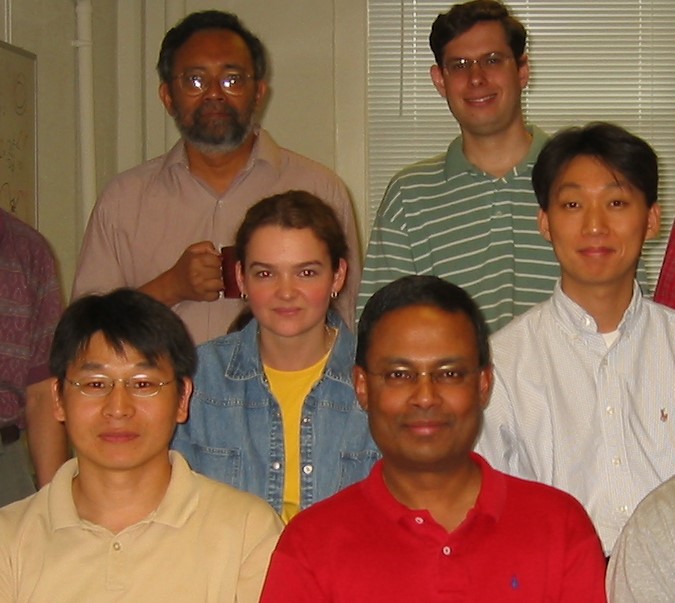To mark the 50th anniversary of Physical Review B, editors selected “milestone” papers that have made lasting contributions to condensed matter physics, including one co-written by Distinguished University Professor Sankar Das Sarma.
Das Sarma wrote the selected paper, Dielectric function, screening, and plasmons in two-dimensional graphene, with Euyheon Hwang. Hwang earned his doctorate in 1996 under Das Sarma, and after appointments as a UMD research associate and assistant research scientist, accepted a faculty post at Sungkyunkwan University (SKKU) in South Korea. He is one of about 100 of Das Sarma’s students and postdocs who have gone on to faculty appoint Euyheon Hwang (seated, yellow shirt) and Sankar Das Sarma (red shirt) with CMTC colleagues in 2003.ments.
Euyheon Hwang (seated, yellow shirt) and Sankar Das Sarma (red shirt) with CMTC colleagues in 2003.ments.
Hwang and Das Sarma have written about 120 articles together, including 88 papers in PRB from 1994 to 2019.
The milestone paper was published in 2007 and has 1,744 citations. In it, the authors developed a many body theory for the dynamical dielectric function of doped graphene at an arbitrary wave vector and frequency. The dielectric function directly determines many physical properties, including electrical and optical properties. This ‘milestone’ publication by Hwang and Das Sarma has been instrumental not only in the development of the fundamental physics of graphene, but has also ushered in the technological field of ‘graphene plasmonics’ which is being widely pursued worldwide for practical engineering use in optics and photonics.
Das Sarma, the Richard E. Prange Chair in Physics, is a Distinguished University Professor, a Fellow of the Joint Quantum Institute, and the director of the Condensed Matter Theory Center. He is internationally known for his work on topological quantum computation, Majorana physics, spin quantum computation, many body phenomena, quantum localization and nonequlibrium statistical mechanics, and has recently entered into the study of twisted bilayer graphene and higher-order topological systems. Google Scholar counts 90,227 citations and calculates an h-index of 124.